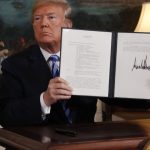by John Feffer
It wasn’t that long ago that the North Korean government issued decrees specifying that men’s hair shouldn’t exceed a certain length. Back in 2005, North Korean television even aired a show titled “Let’s Trim Our Hair in Accordance with the Socialist Lifestyle.” For some foreign observers, this was just more evidence of a would-be totalitarian regime trying to extend its control over every detail of an individual’s life.
But the decree had a very specific purpose. Smuggled in from China, South Korean films and music were becoming quite popular on the sly among young men in North Korea, and they were growing their hair longer to mimic the fashions in the South. The government in Pyongyang was worried about these covert influences.
Contrast that top-down approach to hairstyles with the latest photo op from North Korea: Kim Jong Un posing earlier this month with a group of K-Pop stars who’d just performed in the capital. According to the official North Korean press agency, Kim “was deeply moved to see our people sincerely acclaiming the performance, deepening the understanding of the popular art of the south side.”
After a long, cold period of inter-Korean relations and an even more dangerous deterioration in the dynamic between Washington and Pyongyang, a spring thaw has now begun. The visit by the K-Pop stars to North Korea – and Kim Jong Un’s willingness to praise them – is just the latest sign of hope that the Cold War on the Korean peninsula might finally melt away.
Much depends on the young North Korean leader. Kim Jong Un has reached out in three directions to jolt the status quo on the Korean peninsula. He recently took his first foreign trip to Beijing to mend fences with his putative Chinese ally, Xi Jinping. Coming up later this month will be his first inter-Korean summit with South Korean President Moon Jae-in. And then, perhaps most improbably, he is slated to sit down with U.S. president Donald Trump sometime after that.
Why is the North Korean leader suddenly so interested in diplomacy? Donald Trump and hardliners in Washington believe that Kim Jong Un is crying “uncle” after the U.S. and its allies have been twisting his arm tighter and tighter through economic sanctions and other measures.
But the more salient reasons for Kim’s turnaround have to do with the situation inside North Korea. First of all, the economy doesn’t seem to have been brought to its knees by the economic sanctions. The price of staples like rice and corn are stable, Pyongyang is undergoing a construction boom, and the economy grew nearly 4 percent in 2016 (its best performance since 1999).
Rather than capitulating in the face of U.S containment policy, Kim seems to believe that he is negotiating from a position of strength. After all, North Korea has advanced far enough with its nuclear weapons program to assert confidently that it’s a de facto member of the nuclear club. It has touted its capacity to strike targets in the United States and thus deter a preemptive attack from that quarter. It doesn’t matter so much if North Korea actually has such a deterrent capacity as long as the outside world believes that it does.
Also, Kim seems to have eliminated all of his potential domestic competitors. Like his grandfather before him, he has ruthlessly purged any officials, like his uncle Jang Song-thaek, who could have consolidated a rival political center. Again, this could be an illusion, but the young leader clearly believes that he can make deals abroad without fear of being undercut at home.
Of course, the current spring of summitry wouldn’t be possible without the strenuous efforts of Moon Jae-in. A more conservative leader in the Blue House would not have reacted positively to the North Korean offer in early January. Moon spent considerable political capital by cooperating with Pyongyang on the Olympics and agreeing to another inter-Korean summit. As importantly, the South Korean president has bent over backwards to reassure Donald Trump that his country remains a firm ally of the United States and that Trump continues to call the shots. North Korea needs South Korea to translate its overtures into language that Trump can hear and understand.
Finally, Kim Jong Un benefits from confronting a U.S. president who believes that he alone can direct U.S. foreign policy. For the moment, at least, Donald Trump has decided to ignore his foreign policy advisors who would prefer to go to war with North Korea (like incoming National Security Advisor John Bolton). He is also pushing back against the foreign policy elite’s consensus that agreeing to a summit with Kim Jong Un is already a public relations victory for Pyongyang. Trump’s unpredictability – and his willingness to take positions unpopular with Washington’s expert class – offers the possibility of a breakthrough that a more conventional U.S. president would be reluctant to embrace.
Even if the US-North Korean summit doesn’t materialize – or doesn’t produce a breakthrough – the upcoming inter-Korean meeting promises to build on the current momentum. To be sure, Moon Jae-in is stressing his role as a mediator who can help Pyongyang and Washington find just the right formula for denuclearization as part of a comprehensive détente. And any substantial economic engagement between North and South will depend on U.S. reduction of sanctions. But more inter-Korean cultural exchanges, further relaxation of military tensions, and joint projects like the reunions of divided family members can still move forward.
The changes currently taking place in the diplomatic environment in and around the Korean peninsula are promising, if fragile. A return to cold weather could destroy the early spring buds. But if shaggy K-pop performers can sing and dance on a Pyongyang stage, it might not be long before the rest of us have a reason to celebrate as well.
Reprinted, with permission, from Hankyoreh.





